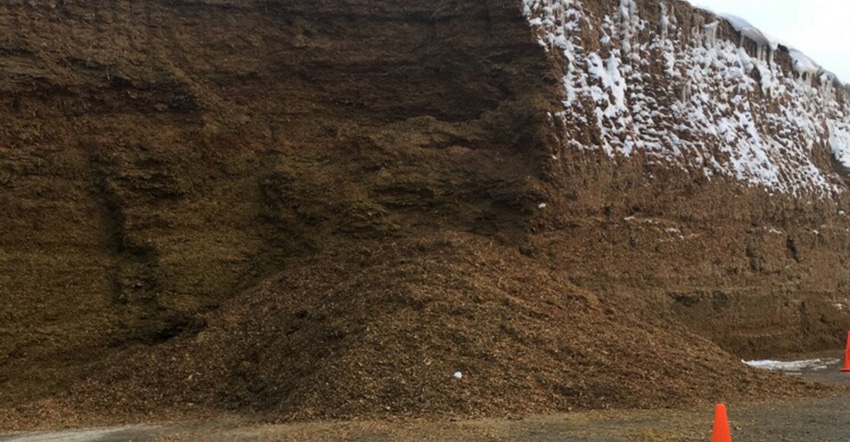December 5, 2018

By Stan Maddux
A veterinarian taking feed samples at a dairy farm in southwest Michigan on Nov. 30 suffocated in a silage avalanche.
John Cummings, 35, of Middleville, Mich., was at the base of a 30- to 50-foot-tall outdoor silage pile when a portion broke loose and covered him at Red Arrow Dairy farm, south of Hartford.
Doug Walker, a detective with the Van Buren County Sheriff’s Office, says Cummings was alone after a farm worker left to take silage drawn from the same outdoor pile to feed the cows.
The collapse happened around 6:30 a.m., prior to the worker returning 20 minutes later.
“It looked like an avalanche came down on one small section,” Walker says.
The accident occurred at a dairy farm owned by Rudy DeYoung, the owner of multiple dairy operations in western Michigan.
Cummings was subcontracted through AG Business Solutions, out of Grand Rapids, to take samples of silage at DeYoung’s dairy operations for testing to make sure the feed was up to standards, Walker says.
Cummings was pronounced dead at a hospital in Watervliet.
In a statement released by Ag Business Solutions, Cummings was described as a very capable veterinarian. “The entire Ag Business Family is deeply saddened and is looking into the cause of this unfortunate accident,” the statement read. “We extend our prayers and heartfelt condolences to his family during this difficult time.”
The Michigan branch of the federal Occupational Safety and Health Administration is investigating. Walker says there were no signs of wrongdoing.
Bill Field, an agriculture safety expert from Purdue University, says outdoor storage of silage is safer and less costly than using silos.
Silage made from corn, cornstalks and other plant material is compacted as it’s piled to force out the oxygen inside the air pockets to prevent spoilage.
Field says accidents of this type are rare, but silage much like deep snow in the mountains can break away from the edge and come down sometimes for no apparent reason.
Anyone covered at the bottom is helpless to dig themselves out because of the weight of the material, he adds.
Causes include weakening at the top from a heavy equipment operator digging too deeply into the side of a pile and bug infestation.
Cummings was most likely drawing samples from tubes inserted into the material at the time of the collapse, he says.
Field says serious injury and death can also occur from workers at the top having silage beneath their feet collapse from getting too close to the edge of a pile.
Storing silage outdoors began several decades ago because it��’s less physically challenging and more cost-effective than filling up and later emptying silos.
Indoor storage also carries a risk of cave-ins and entanglement, along with falls during climbs up a 70-foot or taller silo.
“It’s just a cheaper approach, and it probably has saved a bunch of lives,’’ Field says.
Nobody should be allowed to work at the base of an outdoor silage pile, Field says, without some type of overhead protection.
Maddux writes from New Buffalo, Mich.
You May Also Like




